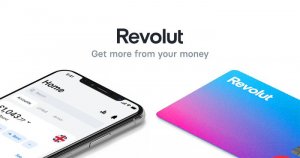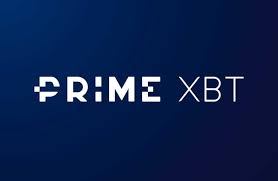Exposed: Lehman Brothers internal FX training manual – Want to know what Tier 1 banks teach their FX desks? Look no further
The Tier 1 banks dominate the FX industry from their Canary Wharf nerve centers. Last look, counterparty credit restriction and lack of accountability when things go awry remain moot points for liquidity takers. Here is what they teach their FX staff.

“In the aftermath of the Lehman Brothers bankruptcy, FX volumes fell substantially, to almost as low as $3 trillion a day in April 2009, and did not return to the previous peak until the beginning of 2011. Thus, the drop coincided with the precipitous fall worldwide in financial and economic activity in late 2008 and early 2009” – Morten Bech, Bank for International Settlements
Tier 1 liquidity is relied upon by our entire finely honed non-bank FX and electronic trading business globally.
Reliance on Tier 1 banks which adorn the shores of London’s docklands at the now extremely prosperous and world-dominating Canary Wharf is so concentrated that over 62% of all worldwide FX order flow is handled by just six banks whose plate glass offices, all of which are within close proximity of Canada Square, power the $5 trillion per day international FX markets.
During recent years, obtaining credit from banks for the purposes of running an OTC derivatives trading firm has become very difficult indeed.
This is a matter which should be of prime consideration when establishing an FX company. The risk arising from the possibility that the counterparty may default on amounts owned on a derivative transaction has become a focal point for liquidity providers, prime brokerage, and even Tier 1 banks whose liquidity is aggregated by non-bank institutional providers which connect retail trading platforms via a single point connection.
Indeed, single dealer platforms have not given way to multi dealer platforms and the status quo remains, with Prime of Prime brokerages having to demonstrate vast balance sheets to the Tier 1 banks in order to maintain their counterparty credit agreements.
As an additional challenge to the need to continue to maintain the criteria stipulated by the large FX dealers, last-look execution is a continual moot point, its prevalence among banks being something of a matter for discourse in the institutional FX sector, largely because if brokerages and prime of primes resorted to order rejection and cherry picking, they would be promptly hauled in front of the regulators, yet at the very top of the tree, it is common practice.
Barclays, one of the most staunch advocates of the last-look execution procedure on its BARX platform which is one of the most universal among FX industry participants, has managed to hold Lehman Brothers’ internal FX training manual to complete secrecy – until now.
On Saturday, September 13, 2008, Timothy F. Geithner, then the president of the Federal Reserve Bank of New York, called a meeting on the future of Lehman Brothers, which included the possibility of an emergency liquidation of its assets.
Lehman Brothers reported that it had been in talks with Bank of America and Barclays for the company’s possible sale, however, both Barclays and Bank of America ultimately declined to purchase the entire company, in the former case because the British government, in particular, the socialist Chancellor of the Exchequer Alastair Darling and the CEO of the Financial Services Authority Hector Sants, refused to allow the transaction at the last minute, quoting stockholder regulations in the UK, despite a deal having apparently been completed.
The next day, Sunday, September 14, the International Swaps and Derivatives Association (ISDA) offered an exceptional trading session to allow market participants to offset positions in various derivatives on the condition of a Lehman bankruptcy later that day. Although the bankruptcy filing missed the deadline, many dealers honored the trades they made in the special session.
Shortly before 1 am Monday morning Eastern Standard Time, Lehman Brothers Holdings announced it would file for Chapter 11 bankruptcy protection citing bank debt of $613 billion, $155 billion in bond debt, and assets worth $639 billion.
It further announced that its subsidiaries would continue to operate as normal.
A group of Wall Street firms agreed to provide capital and financial assistance for the bank’s orderly liquidation and the Federal Reserve, in turn, agreed to a swap of lower-quality assets in exchange for loans and other assistance from the government.
That particular morning, initial panic arose, this time internally, with Lehman employees removing files, items with the company logo, and other belongings from the world headquarters at 745 Seventh Avenue. The spectacle continued throughout the day and into the following day.
Later that day, the Australian Securities Exchange (ASX) suspended Lehman’s Australian subsidiary as a market participant after clearing-houses terminated contracts with the firm. Lehman shares tumbled over 90% on September 15, 2008.
The Dow Jones closed down just over 500 points on September 15, 2008, which was at the time the largest drop in a single day since the days following the attacks on September 11, 2001.
In the United Kingdom, the investment bank went into administration with PricewaterhouseCoopers appointed as administrators. In Japan, the Japanese branch, Lehman Brothers Japan Inc., and its holding company filed for civil reorganization on September 16, 2008, in Tokyo District Court. On September 17, 2008, the New York Stock Exchange delisted Lehman Brothers.
On September 29, 2008, Lehman agreed to sell Neuberger Berman, part of its investment management business, to a pair of private-equity firms, Bain Capital Partners and Hellman & Friedman, for $2.15 billion.
The transaction was expected to close in early 2009, subject to approval by the U.S. Bankruptcy Court, but a competing bid was entered by the firm’s management, who ultimately prevailed in a bankruptcy auction on December 23, 2008.
Creditors of Lehman Brothers Holdings Inc. retain a 49% common equity interest in the firm, now known as Neuberger Berman Group LLC. In Europe, the Quantitative Asset Management Business has been acquired back by its employees on November 13, 2008 and has been renamed back to TOBAM.
Barclays acquisition
On September 16, 2008, Barclays PLC announced that they would acquire a “stripped clean” portion of Lehman for $1.75 billion, including most of Lehman’s North America operations.
On September 20, 2008, a revised version of the deal, a $1.35 billion (£700 million) plan for Barclays to acquire the core business of Lehman (mainly its $960-million headquarters, a 38-story office building in Midtown Manhattan, with responsibility for 9,000 former employees), was approved.
Manhattan court bankruptcy Judge James Peck, after a 7-hour hearing, ruled:
“I have to approve this transaction because it is the only available transaction. Lehman Brothers became a victim, in effect the only true icon to fall in a tsunami that has befallen the credit markets. This is the most momentous bankruptcy hearing I’ve ever sat through. It can never be deemed precedent for future cases. It’s hard for me to imagine a similar emergency.”
Luc Despins, then a partner at Milbank, Tweed, Hadley & McCloy, the creditors committee counsel, said: “The reason we’re not objecting is really based on the lack of a viable alternative. We did not support the transaction because there had not been enough time to properly review it.”
At that time, Lehman’s attorney Harvey R. Miller of Weil, Gotshal & Manges, said “the purchase price for the real estate components of the deal would be $1.29 billion, including $960 million for Lehman’s New York headquarters and $330 million for two New Jersey data centers. Lehman’s original estimate valued its headquarters at $1.02 billion but an appraisal from CB Richard Ellis this week valued it at $900 million.”
Subsequently, there was a further acquisition by Nomura, however for this purpose, the Barclays intellectual property is very interesting, as the bank held the training manual for Lehman Brothers’ FX desks.
An academic of very good standing recently explained “I imagine it served as a primer for market-naive new traders, given that it covers very rudimentary material. If you’re looking to find “insider strategies”, you’ll be disappointed. On the other hand, if you want to know what the actual industry considers starting point material (hint: it’s not babypips), this document is the real deal. For understanding big money perspective, don’t forget that what is not in the manual is just as important as what it does contain.”
“As for the rest of the material, there’s a vast amount of insider emails and documentation for people who like trawling through source material and building deeper understandings of how the whole picture fits together” is the opinion of this particular academic.
The document, which has been publicly displayed by Stanford University in Connecticut, is of great interest to all industry participants.
Feel free to read it cover to cover by clicking here.









